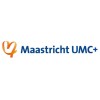
Randomized Phase 2 Trial of Pre-chemotherapy Leukine vs. Leukine-Dexamethasone in Combination With...
Renal Cell Carcinoma-Overall study design: A randomized Phase II study in patients with metastatic RCC Patients will receive chemotherapy with gemcitabine and 5-FU. Prior to each chemotherapy the patient will receive a combination of Leukine alone (study cohort 1) or Leukine-dexamethasone (study cohort 2). -Chemotherapy: gemcitabine 1.0 g/m2 intravenously (infused in the vein)over 30 minutes on Days 7 and 21, Folinic acid 200 mg/m2 on Days 7-8 and 21-22, then 5-FU 400 mg/m2, intravenously (infused in the vein) over 30 minutes followed by 5-FU 600 mg/m2 intravenously (infused in the vein) over 24 hours. •Study drugs: Cohort 1, Leukine, 250 ug/m2 daily (8 am) subcutaneously (under the skin) on days 1, 2, 3, 4, 5 and 15, 16, 17, 18, and 19; Cohort 2, Leukine, 250 ug/m2 daily (8 am) subcutaneously (under the skin)on days 1, 2, 3, 4, 5, and 15, 16, 17, 18, and 19 and dexamethasone 12 mg every 12 hours (8 am and 8 pm) orally (by mouth) on days 3, 4, 5, 6, 7, 17, 18, 19, 20, and 21.

Positron Emission Tomography Using Carbon-11 Acetate and Fludeoxyglucose F 18 in Detecting Hepatocellular...
Liver CancerRATIONALE: Imaging procedures, such as carbon-11 acetate positron emission tomography (PET) and fludeoxyglucose F 18 PET, may improve the ability to detect hepatocellular carcinoma (liver cancer) and allow doctors to plan the most effective treatment. PURPOSE: This clinical trial is studying how well carbon-11 acetate PET and fludeoxyglucose F 18 PET work in detecting cancer in patients with liver cancer.

Delving Into Participation Trends in Renal Cell Carcinoma Studies
Renal Cell CarcinomaThe study seeks to delve into the firsthand experiences of patients diagnosed with renal cell carcinoma who partake in a separate clinical study featuring a specific medical intervention. The primary emphasis will be on meticulously tracking the rates of trial completion and withdrawal among these individuals. By joining this clinical trial, individuals have the unique opportunity to contribute to the betterment of future renal cell carcinoma patients and play an active role in advancing clinical research.

cOCT Versus LC-OCT for Diagnosing Basal Cell Carcinoma: a Diagnostic Cohort Study
Basal Cell CarcinomaBasal cell carcinoma (BCC) is the most common form of cancer among the Caucasian population. Equivocal BCC lesions are usually diagnosed by means of a punch biopsy, but since the last few decades, non-invasive imaging techniques for the diagnosis of BCC gained popularity within the field of dermatology. Conventional optical coherence tomography (cOCT) is an example of a non-invasive imaging technique. Recent studies revealed that OCT assessors may achieve high diagnostic certainty and accuracy for diagnosing BCC. However, cOCT has a limited axial and lateral resolution and can therefore only visualize the gross architecture of the skin. It has been proposed that the diagnostic certainty and accuracy of cOCT could be optimized by improving the resolution. Line-field confocal optical coherence tomography (LC-OCT) is a new non-invasive imaging technique that provides tridimensional images of the skin with a cellular resolution. Although the resolution of LC-OCT is superior to cOCT, the penetration depth of LC-OCT (500µm) is limited compared to that of cOCT (1.0-1.5mm). In the proposed study, we aim to assess whether LC-OCT is superior to cOCT in terms of diagnostic accuracy for diagnosing BCC in equivocal BCC lesions.

A Non-interventional Study With Advanced Lung Squamous Cell Carcinoma
Advanced Lung Squamous Cell CarcinomaThis is a descriptive observational study, in which data are collected in an epidemiological fashion and prospective. This study does not intend to intervene the current medical practice of the recruited patients.

Maintenance Immune Check-point Inhibitor Following Post-operative Chemo-radiation in Subjects With...
Squamous Cell Head and Neck CarcinomaThis is a phase III randomized blind placebo-controlled study, designed to show the superiority of the experimental arm to the control arm. After surgery and checking eligibility criteria, patients will be randomized between the control and the experimental arms with a 1:1 ratio (randomization will take place at a maximum 4 weeks after surgery): Experimental Arm: Durvalumab (one dose) before chemoradiotherapy (CRT) and for 6 months every 4 weeks (Q4W) after CRT Control Arm: placebo (one dose) before CRT and for 6 months Q4W after CRT Radiotherapy planning will take place after randomization. The primary endpoint of this trial is disease free survival (DFS), measured from the date of randomization to the date of first occurrence of any loco-regional recurrence, metastatic progression, or death due to any cause.

Effect of a SI-MMC on the IVR Rate After Ureteroscopy for UTUC
Upper Urinary Tract CarcinomaThe goal of this observational study is to evaluate the intravesical recurrence (IVR) rate after ureteroscopy (diagnostic or treatment) for upper tract urothelial carcinoma (UTUC) followed by an adjuvant single instillation of Mitomycin C (SI-MMC). The main question it aims to answer are: What is the total and time to IVR after 2 years after ureteroscopy (diagnostic or treatment) for UTUC How is the IVR compared with a historical cohort (no SI-MMC) What is the time to IVR after 2 years in patients who subsequently received treatment by endoscopy vs. radical nephroureterectomy (RNU) What is the additional value of a SI-MMC on time to IVR after RNU + adjuvant MMC in patients who were evaluated by ureteroscopy prior to RNU

Subzero and Scorpion Trial
Ductal Carcinoma in SituThis is a prospective single-institution pilot study examining the feasibility of performing ultrasound-guided cryoablation to completely ablate breast ductal carcinoma in situ (DCIS). The study is designed such that patients meeting selection criteria will undergo cryoablation followed by surgical resection. The pathology of the surgical specimen will be used to determine the rate of complete tumor ablation. Standard adjuvant therapies otherwise remained unchanged.

Lymph Node Mapping in Patients With Newly Diagnosed Endometrial Cancer Undergoing Surgery
Stage I Endometrial CarcinomaStage II Endometrial Carcinoma2 moreThis clinical trial studies lymph node mapping in patients with newly diagnosed endometrial cancer undergoing surgery. Lymph node mapping may help in planning surgery to remove endometrial cancer and affected lymph nodes.

Trebananib (AMG 386) in Combination With Docetaxel for Advanced Urothelial Carcinoma
Urothelial CarcinomaThis study plans to learn more about the combination of AMG 386 and docetaxel for the treatment of advanced urothelial cancer. Subjects are being asked to be in this research study because they have advanced urothelial cancer which has progressed after treatment with a platinum-based therapy. The hypothesis is that AMG 386 will increase the historical response rate of docetaxel as a single agent.
